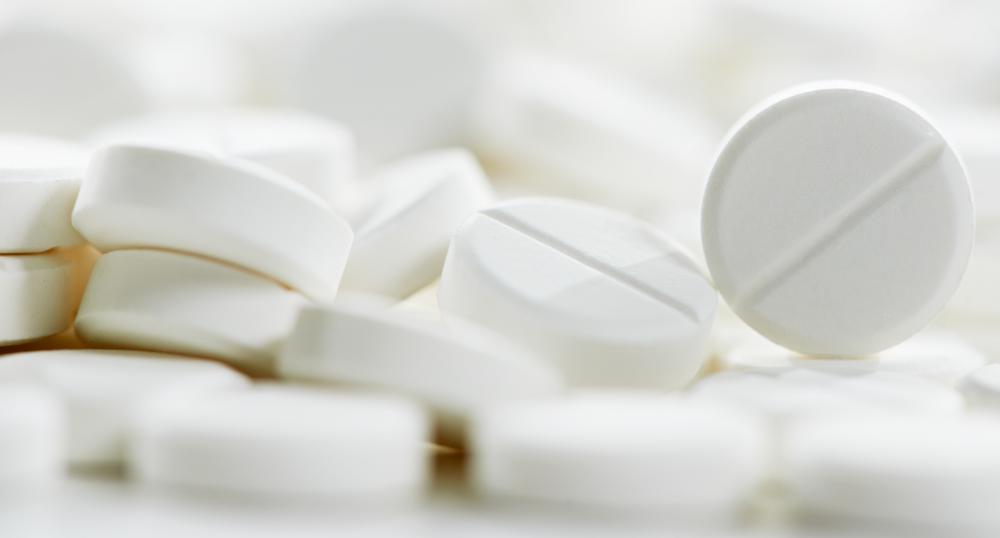At TheHealthBoard, we're committed to delivering accurate, trustworthy information. Our expert-authored content is rigorously fact-checked and sourced from credible authorities. Discover how we uphold the highest standards in providing you with reliable knowledge.
What is Phenoxymethylpenicillin?
Phenoxymethylpenicillin is oral penicillin, an antibiotic commonly used for treating bacterial infections. Discovered in 1928 by Alexander Fleming, penicillin was a compound produced by the mold genus Penicillium. This compound got its name because it has a phenoxy- group, derived from phenol, and a methyl group. Also called penicillin V potassium, it is used for nonresistant pneumonia, upper respiratory tract infections, mouth infections, sore throat, diphtheria, syphilis, and leptospirosis.
Like other types of penicillin, phenoxymethylpenicillin has a beta-lactam ring, the integrity of which is needed for the antibiotic activity of the drug. Nevertheless, it works by inactivating the penicillin-binding proteins (PBPs) needed for cell wall synthesis and of bacterial enzymes called transpeptidases. The role of these bacterial transpeptidases is to cross-link the polymers of peptidoglycan in order to strengthen the integrity of the bacterial cell wall. With the inactivation of both PBPs and transpeptidases, the bacterial cells lose their rigidity and become susceptible to rupture.

Phenoxymethylpenicillin is used to treat many infections, particularly those caused by Gram-positive bacteria, which have thick layers of peptidoglycan in their cell walls. Aerobic Gram-positive cocci like pneumococcus, Streptococcus, and Staphylococcus may be treated with this drug, as are aerobic Gram-positive rods like Bacillus, Clostridium perfringens, and Clostridium diphtheriae. It is effective against oral anaerobes, except for Bacteroides fragilis, but it has no antibiotic activity against Gram-negative bacteria like Salmonella, Haemophilus, and Proteus. The most common pathogens for which penicillin drugs are used are the organisms Treponema pallidum and Leptospira, which cause syphilis and leptospirosis, respectively.

Although this antibiotic has been very helpful in the fight against microbes, its usefulness is undermined by the development of antimicrobial resistance. Resistant organisms like Staphylococcus aureus, Escherichia coli, Neisseria gonorrhoeae, Bacteroides, and Pseudomonas aeruginosa can produce enzymes called penicillinases or beta-lactamases, which break down the beta-lactam ring and render the drug ineffective. Other bacteria develop resistance through the lack of cell wall, receptors, or PBPs, and the impermeability of the cell wall to penicillin.

Like other kinds of penicillin, phenoxymethylpenicillin has several side effects. Penicillins are notorious for inducing allergies or hypersensitivity reactions, including rashes or hives, itching, fever, difficulty breathing, anaphylaxis, and swelling of the tongue, lips, throat, or face. Other side effects include diarrhea, inflammation of the large intestine known as pseudomembranous colitis, and opportunistic infections like candida. Any of these symptoms merit a consultation with a medical professional.
AS FEATURED ON:
AS FEATURED ON:















Discussion Comments
@wavy58 - Wow, that is an intense reaction. I probably would have had a panic attack from that!
I had some minor side effects when I took penicillin V, but it was nothing compared to what you experienced. I noticed a bit more flatulence than usual, and I had some diarrhea.
The worse part was the cramps that came before the diarrhea. My lower abdomen was very uncomfortable. I spent a lot of time on the toilet, waiting for the movement that I knew had to be coming soon.
Because of the side effects, I had to miss a few days of work. Otherwise, I could have easily done my job after only one day to recover, because I felt a lot better on the second day of taking the antibiotic.
@Perdido - I was one of the unlucky ones who did have a severe allergic reaction to phenoxymethylpenicillin. I had never taken any type of penicillin before, so I had no idea what my body would do.
Within a couple of hours of taking my first dose, my lips and cheeks started to go numb. At first, they just felt tingly. Then, I started to see that they were swelling.
This scared me, so I called my doctor’s office. The nurse there told me to take whatever kind of antihistamine I had on hand, and she said she would get the doctor to call in a prescription for a stronger antihistamine in just a few minutes.
I started popping pills right away. I had my friend drive me to the pharmacy, because I didn’t whether my condition might worsen on the way or not.
Once I got a heavy dose of antihistamine, the swelling started to go down. The tingling continued for hours, but it went away during the night.
I took this drug to treat my upper respiratory infection. I had a sore throat and stuffy nose, and I could feel it slowly working its way down into my chest.
I knew I needed to get it treated before it got there, because chest coughs are the worst about putting up a fight when you’re trying to get rid of them. My doctor gave me this antibiotic, and she told me to take it for ten days.
The label had all kinds of scary warnings about severe reactions and side effects. Thankfully, I did not experience any of them. The medicine stopped the infection from causing a chest cough, and I slowly began to improve.
My doctor prescribed this type of antibiotic to treat my strep throat. He also gave me a dose pack of steroids to take for five days. Because I was taking the two medications at once, I couldn’t tell at first which one was working.
After the steroids wore off, I started to feel worse. My sore throat was returning, and the cough had gone down into my chest. It was clear that the infection had not responded to the antibiotic.
I had to go back to my doctor for a different type of antibiotic. He prescribed one that is considered broad spectrum, meaning that it can treat a wide variety of infections. This one worked.
Has anyone else ever taken phenoxymethylpenicillin for a strep throat? Was your infection resistant to it?
Post your comments